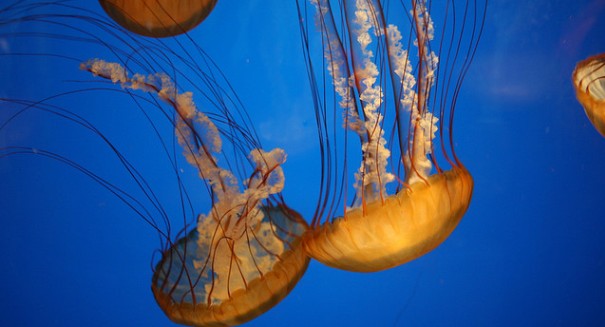
Research shows brainless jellyfish can detect ocean currents and actively swim against them.
Those beautiful yet brainless blobs known as jellyfish are far more advanced than originally thought, new research shows.
Despite their lack of brains – and eyes – jellyfish are capable of picking up ocean currents and swimming against them, researchers found.
“Detecting ocean currents without fixed visual reference points is thought to be close to impossible and is not seen, for example, in lots of migrating vertebrates including birds and turtles,” said study co-author Graeme Hays of Australia’s Deakin University in a statement.
“Jellyfish are not just bags of jelly drifting passively in the oceans,” added Hays. “They are incredibly advanced in their orientation abilities.”
Researches used GPS to follow barrel jellyfish movements as well as GPS-tracked floats to monitor ocean currents.
The collected data showed jellyfish will purposefully swim against currents to counter drift. Instead of always going where ocean wants to take them, jellyfish demonstrated some control over their destinations.
With the findings, researchers gained valuable insight into jellyfish behavior. Blooms are many seafarers’ worst nightmare as millions of jellyfish suddenly amass on the ocean surface. The research shows how these blooms form; innumerable jellyfish swim to specific locations and stay there for long lengths of time.
Hays and a fellow researcher think brainless jellyfish ascertain ocean currents across their whole body surface or use the Earth’s magnetic field or infrasound to orient themselves in the vast ocean.
Understanding jellyfish behavior has implications for fellow sea creatures and humans alike, and the study serves as a jumping off point for further research into the surprisingly clever lives of jellyfish.
“Now that we have shown this remarkable behavior by one species, we need to see how broadly it applies to other species of jellyfish,” said Hays. “This will allow improved management of jellyfish blooms.”
Leave a Reply